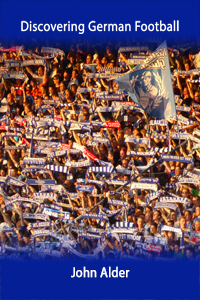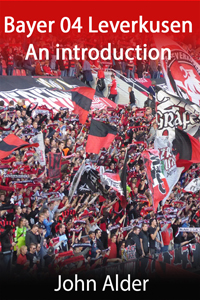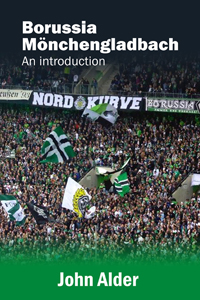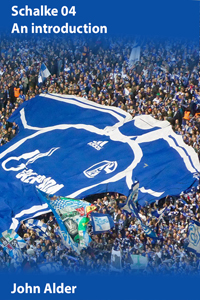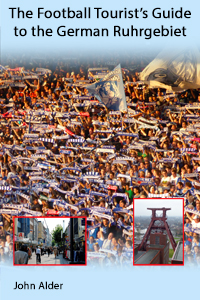The fall of the Berlin Wall – 9th November 1989
The 9th November was the 30th anniversary of the fall of the Berlin Wall – the concrete monstrosity that had divided a city and a country since 1961. This month people across the world, and particularly in Germany, have been recalling that fantastic evening when the crossing points opened and citizens of the communist East Germany flocked into the western half of Berlin. It was a significant moment in the gradual fall of communism and the collapse of the Soviet Union. In less than a year Germany would be reunited. What is more, life in both halves of the country would change forever. And the fall of the Wall also meant massive changes to football – particularly in the eastern part of the country.
East German football before the fall of the Berlin Wall
East German football was good at youth level. The national team won tournaments in 1965 and 1970, were European champions in 1986 and came 3rd in the Youth Cup in 1987. Above all, there was a strong system to identify and develop talented young players who were then developed by excellent youth coaches.
The national team was less successful. Some say this is down to the East German political system which focussed on the group rather than the individual – so when things went wrong, there was no one individual able to step forward and take the lead. Former players themselves have said they lacked often nerve on the big occasion. As foreign travel was very restricted it might simply be that East German players lacked international experience.
East German football clubs – some interesting names but little success
East German teams were certainly not the strongest in Europe, but the likes of Fiorentina, Inter, Leeds, Porto, Juventus and Barcelona all lost games there. Magdeburg won the Cup-Winners Cup in 1974, and Carl Zeiss Jena reached the final in 1981.
The communists saw football not just as a sport, but also as part of education and nation-building. So when they communists took over after the war, they renamed many traditional teams.
- Clubs with Dynamo (Dresden, Leipzig) in their name were linked to the security police – the infamous Stasi
- The inclusion of the word Vorwärts (forwards) meant a link to the armed forces (
- Works teams included industry references in their names: for example Chemie Leipzig, Lokomotiv Leipzig, Stahl Brandenburg
- Clubs with no affiliations – for example, FC Magdeburg
Top politicians used clubs as personal playthings. Players and sometimes whole teams were moved at the direction of powerful men such as Eric Mielke – (head of the Stasi) and Harry Tisch (Union boss). There were informers in every team because the authorities were terrified that top players would abscond to the west. Because the party decided which referees got to officiate international games, there was always a suspicion that disputed decisions went to the teams favoured by party leaders.
How did German football come together?
1990-91 was the last season of divided football. By the beginning of the next season, football had reunited. Which East German team joined which division in an expanded structure was decided partly by performance over the previous season and partly by competition. The top two teams – Hansa Rostock and Dynamo Dresden were given places straight away. The next four teams – Erfurt, Halle, Chemnitz and Jena – joined the 2. Bundesliga. The bottom six teams and the two who would have won promotion from the league before played a qualifying competition for a final two places. The two winners were Lokomotive Leipzig and Stahl Brandenburg.
What happened next?
Wealthy West German clubs flocked eastwards snapping up established players and promising trainees. As a result, by 1995 150 former first division players had moved to Bundesliga clubs.
Top players who moved westwards at this time included Matthias Sammer (Stuttgart) Andreas Thom(Leverkusen), Ulf Kirsten (Leverkusen), Jörg Stübner (dropped to amateur leagues) Thomas Doll (Hamburg), Frank Rohde(Hamburg) Rico Steinmann (1 FC Köln) Rainer Ernst (Kaiserslautern) Dirk Schuster (Braunschweig) Most players, who had benefited from excellent coaching, thrived in the west. Others never entirely adjusted to the changes. Jörg Stübner, for example, found himself beset by self-doubt and never played at the highest level again.
All East German clubs struggled in this new world. Unscrupulous agents fleeced players and officials not used to the ways of capitalism. A strong fanbase was not enough to stay afloat if these fans could not afford Bundesliga prices. Because of these pressures, clubs struggled to hold on to good players and gradually dropped through the divisions. Some East German football clubs disappeared altogether.
Hansa Rostock were relegated at the end of the first season. Although the club enjoyed ten years in the Bundesliga from 1995 Rostock now play in 3. Liga.
Dresden survived in the Bundesliga for four years, but accumulated massive debts along the way. Now they play in 2 Bundesliga.
And none of the six clubs who joined the second division are still playing at that level. Three – Halle, Chemnitz and Jena – are in the 3. Liga. Erfurt and Lok Leipzig are one division lower and Stahl Brandenburg, who came third in the last Oberliga season are now in the 6th tier Brandburgliga.
But it wasn’t all bad news. Other East German clubs emerged from the shadows to eventually hold their own in the new world. Energie Cottbus has managed two three-year stints in the Bundesliga. Union Berlin won promotion to the Bundesliga last season. Erzgebirge Aue, a small village to the far east of the country are holding their own in the 2 Bundesliga.
Where are the top teams from 1991?
These tables show the top teams from East and West Germany at the end of the 1990-91 season and where they are playing today. It’s interesting to see how many big names from the West are still around, but how few from the East.
|
Oberliga 1991 |
Today |
| Hansa Rostock | 3. Liga |
| Dynamo Dresden | 2. Bundesliga |
| Rot Weiß Erfurt | Regionalliga Nordost (4th tier) |
| Halle | 3. Liga |
| Chemnitzer FC | 3. Liga |
| Carl Zeiss Jena | 3. Liga |
| Lokomotive Leipzig | Regionalliga Nordost (4th tier) |
| Stahl Brandenburg | Brandenburgliga (6th tier) |
| Stahl Eisenhüttenstadt | Dissolved 2016 |
| 1. FC Magdeburg | 3. Liga |
| FC Berlin | Regionalliga Nordost (4th tier) |
| Sachsen Leipzig | Dissolved 2011 |
| Energie Cottbus | Regionalliga Nordost (4th tier) |
| Viktoria Frankfurt | Brandenburgliga (6th tier) |
| Union Berlin (promoted) | Bundesliga |
| FSV Zwickau | 3. Liga |
|
Bundesliga 1991 |
Today |
| Kaiserslautern | 3. Liga |
| Bayern München | Bundesliga |
| Werder Bremen | Bundesliga |
| Eintracht Frankfurt | Bundesliga |
| Hamburger SV | 2. Bundesliga |
| VfB Stuttgart | 2. Bundesliga |
| 1.FC Köln | Bundesliga |
| Bayer 04 Leverkusen | Bundesliga |
| Borussia Dortmund | Bundesliga |
| SG Wattenscheid | Declared insolvent 2019 |
| Fortuna Düsseldorf | Bundesliga |
| Karlsruher SC | 2. Bundesliga |
| VfL Bochum | 2. Bundesliga |
| 1.FC Nürnberg | 2. Bundesliga |
| FC St Pauli | 2. Bundesliga |
| Bayer 05 Uerdingen | 3. Liga (now KFC Uerdingen) |
| Hertha Berlin | Bundesliga |
| Schalke 04 (promoted) | Bundesliga |
| MSV Duisburg (promoted) | 3. Liga |
| Stuttgarter Kickers (promoted) | Oberliga Baden-Württenberg (5th tier) |
Where can I find out more about East German football?
- When I am researching German football I still always turn first to Tor! The Story of German Football by Uli Hesse.
- Mike Dennis, Professor of Modern German History at the University of Wolverhampton, has written a very informative piece about East German football.
- This BBC story about two East German footballers escaping to the west gives you an insight into the sport in the communist era: https://www.bbc.co.uk/sport/football/50289343
- There is a fascinating article on the Deutsche Welle website about the last days of East German football.
